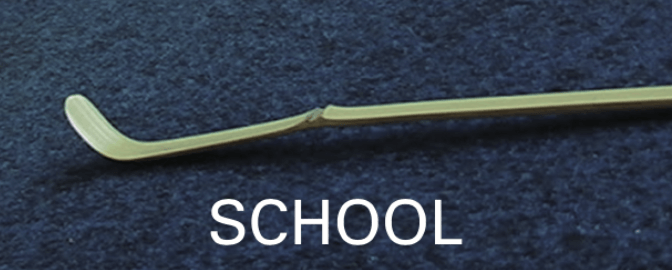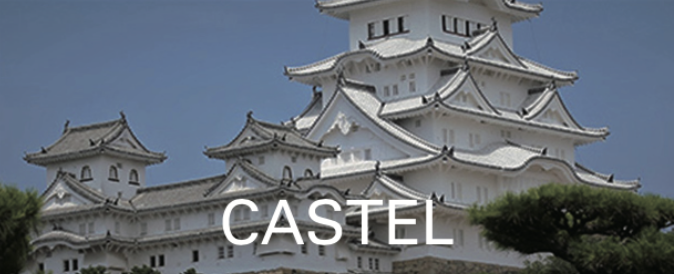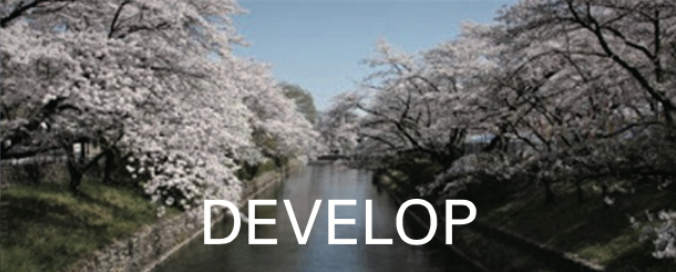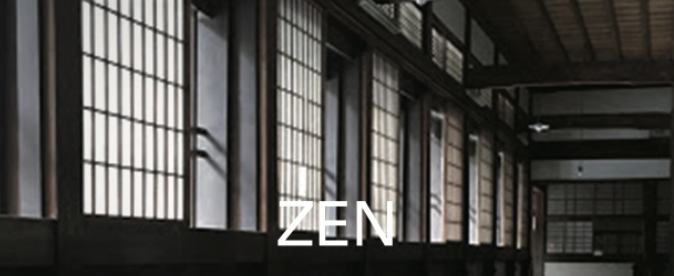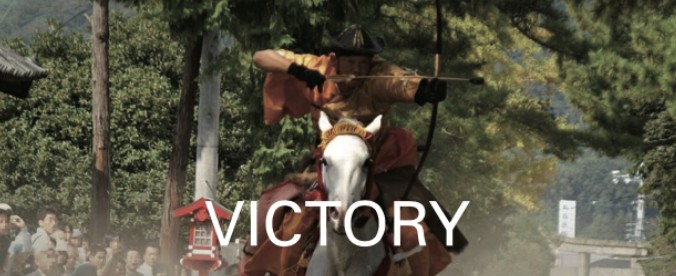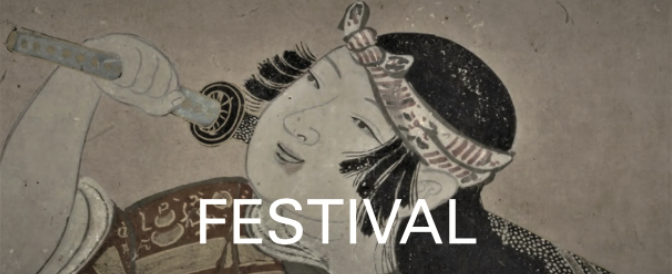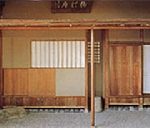
This museum is at the ruins of Toyamajo Castle, which was built in the Age of the Provincial Wars in the 15th – 16th centuries and flourished as a castle of feudal lord, the Toyama Maeda family, during the Edo period (1603 – 1868). This museum exhibits a collection of the oriental antique arts, which are mainly paintings and ceramics.
In addition, Ryuteian, a tea-ceremony room, created under the guidance of Kanamori Sowa (1584 – 1657), a master of the tea ceremony and garden designer, was relocated here. The room has Nijyo Dai, two Tatami mats, for the main guest, double sliding wooden doors of Nijiriguchi, a small door that leads into the tea ceremony room. Its long and narrow alcove has Fumikomi-doko, floor boards, and Bokuseki Mado, a window on the side wall to provide light.
This style has a fashionable aesthetic, which was Hime Sowa, the tea ceremony style loved by the court nobles in Kyoto.
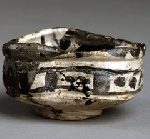
Oribe ware has rampant painting, bold modeling, and innovative design. The history of Mino ware, the precursor of Oribe ware, started from Sue ware, unglazed earthenware in the first part of the 7th century. Motoyashiki kiln, produced many tea bowls, during the rise of the tea ceremony in Sakai. Osaka and Kyoto, from the Azuchi-Momoyama period (1573 – 1603) to the early of Edo period (16th-17th century).
This museum introduces many potteries that tell the history of Mino ware through special exhibitions once a year and several special exhibitions, focusing on Shino ware and Oribe ware, excavated from the ruins of Motoyashiki kiln, which produced famous pottery.
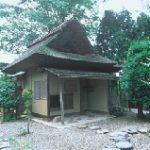
This tea-ceremony room is located on the hill, overlooking the castle tower, of Matsuejo Castle at the north lake side of Shinji Lake. This old tea-ceremony room is associated with Matsudaira Harusato Fumai (1751 – 1818), the 7th lord of Matsue Domain.
Fumai built the foundation for the development of art and culture in Matsue Domain, through the tea ceremony. This room has Shatsukei, borrowing the landscape of Shinji Lake. The view has wide open space, as if the gods and goddesses in the ancient could visit.
Fumai designed the space with the beauty from subtraction, which was the preparation for the transient beauty from near, limited space to far, open space.
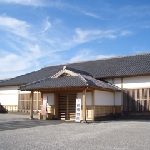
This museum introduces Hagi ware, which has less density and permeability, and more astringency as it is used, due to it being made in a kiln at low heat. Hagi ware began when the Mouri clan moved to Hagi from Hiroshima after the Battle of Sekigahara in 1600.
Hagi ware used to be similar to the process and shape of Korai Chawan, bowls from Korea. Hagi ware developed the permeated tint and the dispassionate taste during 400 years, like Horiuchi’s streetscape in the Castle Town of the Mouri clan.
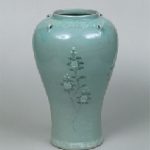
The museum introduces Hagi ware and related pottery works with a history of 400 years, and possesses Ukiyoe, Japanese woodblock prints, and Oriental ceramics, as the core of the collection. These pieces were donated by Mr. Uragami, who came from Hagi.
This museum possesses Seijizougan Kikamon shijiko (Inlaid celadon porcelain jar with Chrysanthemum pattern and four lug handles). Its Tachigiku pattern, a standing-chrysanthemum pattern, which was inlaid with black, is very subtle. A leaf pattern at its top and thunder pattern at its body are decorated with white inlay.
This body is a style of earthenware pot with a squared shoulder and slender waist. This inlaid celadon porcelain is elaborate and splendid, which was made during the Goryeo Period in Korea, in the 12th century.
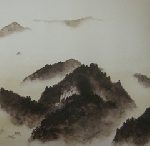
This museum possesses works of Yokoyama Taikan (1868 – 1958), Munakata Shiko (1903 – 1975), a Japanese woodblock printmaker, which adorn the history of Japanese modern art, in addition to books of Rai Sanyo (1781 – 1832), a Japanese Confucian scholar, historian and Imperialist who influenced emperor-centered nationalism at the end of the Tokugawa Shogunate, in the latter part of the Edo period.
Sanyo thought the Unity of Shintoism and Confucianism, the systems of prayer in Japan, since ancient times, and the idea of Jin, benevolence, were virtues. In the 19th century, he wrote Nihon Gaishi, a book of Japanese samurai’s history, from the Heike (Taira) clan to the Tokugawa family, and influenced the movement of Sonno Joi, the emperor-centered nationalism and the expulsion of foreigners.
His insight foresaw the modern days coming which understood the historical turning point, as Ikioi kiwamareba sunawachi henzu, (When the momentum becomes extreme, things will change), and Henzureba sunawachi naru, (When things change, transformation will occur).
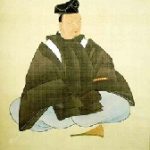
This museum is built on the site of the residence of the Rai family. It exhibits the deposits of the Takehara Rai family and Shunpukan, the residence of the uncle of Rai Sanyo (1781 – 1832), a Japanese Confucian scholar, historian and Imperialist who influenced the rise of emperor-centered nationalism at the end of the Tokugawa Shogunate period.
Sanyo wrote the introduction of Sangokushi-engi, Romance of the Three Kingdoms in the 2nd -3rd centuries in China, which was published as a “Picture book in popular style, Sangokushi-engi” in 1835.
He mentioned that the trend of present days became unfamiliar with Keigi, the understanding of classic Confucian writings. He felt the present poetry and prose became old fashioned and the present books became sleepy. Under the situation, I prefer to read Sangokushi-engi, which elegantly depicted the evil spirits.

Ikeda Mitsumasa (1609 – 1682), a feudal lord and the 1st lord of the Okayama Domain, founded this school for the education of common people, in 1670. Its lecture hall is a National Treasure. Its sacred mausoleum and Shizutani shrine are important cultural properties. All of its roofing tiles used Bizen ware, Bizen Province, Okayama.
The neo-Confucianism and the porcelain brought to Japan in the Japanese invasion of Korea (1592 – 1598) by Toyotomi Hideyoshi (1537 – 1598), the powerful feudal lord and Imperial Regent who unified Japan, in the Azuchi-Momoyama period (1573 – 1603), spread to common people in the Edo period (1603 – 1868).
And the history of those days, when each feudal domain competed for the education of local clans, has been preserved here.
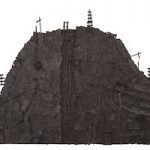
This museum possesses a lot of works by artists who are well associated with Tagawa City, as well as Agano ware, traditional porcelain of Fukuoka prefecture. Hosokawa Tadaoki (1563 – 1646), a feudal lord, the eldest son of Hosokawa Fujitaka Yusai, invited a Koraen potter, Sonkai (Japanese name, Agano Kizo) (1566 – 1654), and he built a climbing kiln in the Edo period (1603 – 1868), when he was the lord of the Kokura Domain. It was the beginning of Agano ware.
Tadaoki was one of Rikyu shichitetsu, the seven disciples of Sen no Rikyu(1522 – 1591),the greatest tea master, and the tea master to the military dictator of Japan, Oda Nobunaga. Toyotomi Hideyoshi invented the wabi-sabi style of tea ceremony, and was mostly admired by Rikyu. The green ware of Agano is thin and light.
It is used with many types of glaze, which changes its pattern in the kiln. It is without ceramics painting. It is the beauty of Samurai.
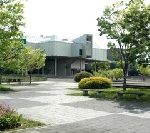
This museum introduces the history of Saga, the source of many people who have built a modern education system such as Okuma Shigenobu (1838 – 1922), Prime minister of Japan, and the founder of Waseda University, and Oki Takato (1832 – 1899), a Japanese statesman and Governor of Tokyo. This museum exhibits 1,208 objects and fully introduces the history of this prefecture, where many things began in Japan.
The plain area in the southern part of Saga city was under the sea, during the Jomon period (16,000 years ago – 3,000 years ago) and the Yayoi period (the 4th BC – 3rd century). The ritual, the courtesy of welcoming honored guests of the Chinese Dynasty, castle structure, and calendar, etc., had come to the hillock near the sea side, and were taken into the root of this country.
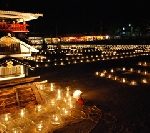
This town, Takanabe had the relation with the Six Dynasty periods in China, in the 3rd-6th centuries, by the excavation of Shishin Shinju Kyo, an ancient mirror decorated with four gods and four divine beasts.
The Akizuki clan, who is said to be the descendant of the Chinese Emperor of the Han Dynasty, moved here from Chikuzen Province Fukuoka, Kyushu. After the conquest of Toyotomi Hideyoshi (1537 – 1598), the powerful feudal lord and Imperial Regent who unified Japan, Takanabe flourished as a castle town of the Akizuki clan with 30,000 koku, a unit of volume of rice, in early modern times.
Akizuki Taneshige (1744 – 1819), the 7th lord of the domain founded a clan school, Meirindo, in the golden age of this domain. The lantern festival, in which lights shows learning in the dark is held in October, to remember the illustrious memory of Taneshige.
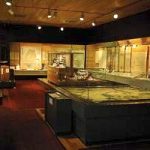
Takanabe history comprehensive museum is located in the Maizuru Park of Takanabejo (Akizukijo) Castle ruins. This museum introduces the relation with the Six Dynasties period in China, in the 3rd-6th centuries, by the excavation of Shishin Shinju Kyo, an ancient mirror decorated with four gods and four divine beasts.
This museum also introduces Akizuki Tanetatsu (1833 – 1904), the son of the 9th lord of the Tanabe Domain, who studied under Yasui Sokken (1799 – 1876), a classical scholar of Confucianism. He was appointed the magistrate of Gakumonjo, the prestigious school in the Tokugawa shogunate and it was said that he lectured Emperor Meiji (1852 – 1912), later. Banzaitei, which was the restored residence of Tanetatsu, has Suikinkutsu, a water harp.
The sound of Suikinkutsu clears up at the house.
